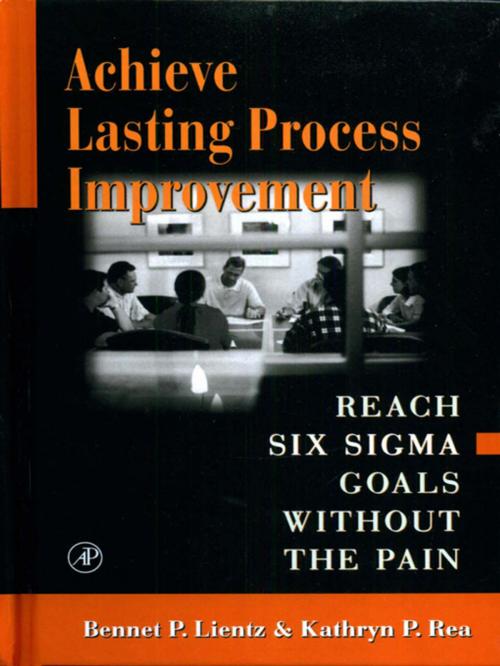Achieve Lasting Process Improvement
Business & Finance, Management & Leadership, Management, Nonfiction, Reference & Language, Reference| Author: | Bennet Lientz, Kathryn Rea | ISBN: | 9781136431326 |
| Publisher: | Taylor and Francis | Publication: | November 3, 2009 |
| Imprint: | Routledge | Language: | English |
| Author: | Bennet Lientz, Kathryn Rea |
| ISBN: | 9781136431326 |
| Publisher: | Taylor and Francis |
| Publication: | November 3, 2009 |
| Imprint: | Routledge |
| Language: | English |
Methods of improving business processes are developed on an ongoing basis, but few are successful. Common problems encountered include the failure of processes to meet expectations and the inability to sustain or replicate these business processes. Involvement of personnel at grassroots level, as well as at management level, is essential in implementing effective process improvement methods.
The authors present a step-by-step approach to the issue of effective process improvement, offering more than 200 tips and guidelines as well as addressing specific common problems and issues. The strategy presented is to take a broad and intuitive, but learned view of process improvement methods, and the tactics expounded are based on guidelines, common faults, and lessons learned. The authors disparage process improvement operations that depend on jargon and the support of just upper management, and promote grassroots involvement and self-sustaining measurement, making this an essential guide for all with involvement in process improvement.
Methods of improving business processes are developed on an ongoing basis, but few are successful. Common problems encountered include the failure of processes to meet expectations and the inability to sustain or replicate these business processes. Involvement of personnel at grassroots level, as well as at management level, is essential in implementing effective process improvement methods.
The authors present a step-by-step approach to the issue of effective process improvement, offering more than 200 tips and guidelines as well as addressing specific common problems and issues. The strategy presented is to take a broad and intuitive, but learned view of process improvement methods, and the tactics expounded are based on guidelines, common faults, and lessons learned. The authors disparage process improvement operations that depend on jargon and the support of just upper management, and promote grassroots involvement and self-sustaining measurement, making this an essential guide for all with involvement in process improvement.















